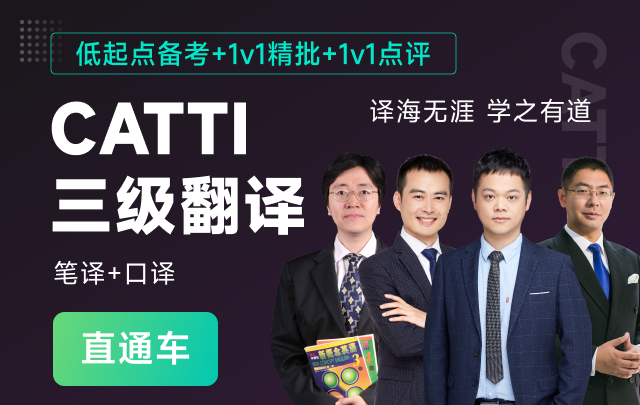加快推进工业转型升级
Acceleratingthe Transformation and Upgrading of Industries
苗圩
Miao Wei
中央经济工作会议明确要求,牢牢把握发展实体经济这一基础。工业是国民经济的基础,是实体经济的主体。“十二五”时期,我们必须坚持以科学发展观为指导,加快推进工业转型升级,在探索新型工业化道路上迈出实质性步伐。
At the Central Economic WorkConference, clear requirements were set forth for steady efforts to develop thereal economy, which constitutes the foundation for China’s overall development.Industry is both the foundation of the national economy and the primarycomponent of the real economy. Therefore, during the Twelfth Five-Year Plan, wemust take the Scientific Outlook on Development as our guide, accelerate thetransformation and upgrading of industries, and seek to make substantiveprogress in our search for a new approach to industrialization.
一、深刻认识转变工业发展方式的战略意义
I. Thestrategic significance of transforming the pattern of industrial development
“十一五”时期,我国工业获得了长足发展,工业整体素质明显改善,国际地位显著提升。从总量看,“十一五”时期,我国工业增加值年均增长11.3%,2010年达到16万亿元,约占国内生产总值的40%。截至目前,500多种工业产品中我国有220余种产量位居世界前列,制造业增加值占全球的19.8%,规模位居世界第一,是名副其实的全球制造业基地和世界工厂。从结构看,淘汰落后产能取得积极进展,重点行业产业集中度明显提高,中西部地区工业增加值占全国比重不断加大,规模以上企业单位工业增加值能耗累计下降26%、用水量下降36.7%,工业化学需氧量、二氧化硫排放量分别下降17%、15%。与此同时,我国工业自主创新能力明显提升,载人航天、探月工程、高性能计算机等一批重大装备和关键技术取得突破,为我国抢占全球产业制高点和培育国际竞争新优势创造了条件。特别是在应对国际金融危机中,我们坚决贯彻中央一揽子计划措施,在较短时间实现了工业增速“V”型反转,为保持经济平稳较快发展做出了重要贡献。
China’s industries witnessedconsiderable development during the Eleventh Five-Year Plan (2006-2010), aperiod in which the overall quality of our industries was improved and theinternational status of Chinese industry was enhanced significantly. In termsof overall output, China’s industrial added value grew at an average rate of11.3% per year during the Eleventh Five-Year Plan, reaching 16 trillion yuan in2010, which accounted for 40% of the GDP. As of the present, of the 500-plusindustrial products that China produces, the output of over 220 has climbedtowards the top of the world rankings. The added value of China’s manufacturingindustry accounted for 19.8% of global industry value-added, higher than anyother country. This shows that China is indeed a global manufacturing base andthe world’s factory. In terms of structure, good progress was made in theelimination of backward production capacity, key industries becamesignificantly more concentrated, and the contribution of central and westernregions to China’s total industrial added value constantly increased. Inaddition, energy consumption per unit of added value for large-scale industrialenterprises dropped by a total of 26%, water consumption dropped by 36.7%, andchemical oxygen demand (COD) and the volume of sulfur dioxide emissions droppedby 17% and 15% respectively. At the same time, China’s capacity to engage inindependent industrial innovation saw remarkable increases. New breakthroughswere achieved in major equipment and key technologies regarding mannedspaceflight, lunar exploration, and high performance computers. These advanceshave created favorable conditions for China to seize the high ground in globalindustry and develop new advantages in international competition. Moreover, inresponse to the international financial crisis, we took resolute action toimplement the stimulus package of the central government, achieving a sharpturnaround in industrial growth within a relatively short period of time. Bydoing so, we made an important contribution to maintaining rapid but stableeconomic growth.
“十二五”是中国工业发展的关键期。一方面,全球经济正处在大变革大调整中,我国工业发展的国际环境和形势面临着深刻变化。一是世界经济增长模式正在发生重大变化。国际金融危机影响仍在持续,主权债务危机还在蔓延,世界经济增速减缓,贸易保护主义有所抬头,来自发达国家“再工业化”和新兴经济体的同质化竞争压力加大,对工业发展提出了新要求。二是全球产业结构在科技创新推动下正在进行深度调整。近年来,全球科技创新和技术革命步伐加快,信息网络、生物、可再生能源等领域酝酿新的突破,主要国家抓紧培育发展以绿色、低碳、高端为特征的新兴产业,围绕新兴产业的国际竞争将更加激烈。三是工业生产方式加快变革。信息网络技术的广泛应用促进了生产性服务业的迅速发展,柔性制造、虚拟制造成为世界先进制造业的发展方向,全球化生产和组织模式成为控制全球价值链的关键。
The Twelfth Five-Year Plan is akey stage for China’s industrial development. On one hand, the global economyis undergoing great changes and shifts, which will bring about profound changesto the environment and situation in which China’s industries develop. Thegrowth pattern of the world economy is also undergoing major changes. Theimpact of the international financial crisis has yet to be dispelled, sovereigndebt crises are continuing to spread, the pace of global economic growth isslowing down, and trade protectionism has emerged. In addition, China’sindustrial development is also under the pressure posed by the trend ofreindustrialization in developed countries and homogenous competition amongemerging economies. All of these things have presented new requirements forChina’s industrial development. Profound changes in the global industrialstructure are also being fueled by technological innovation. In recent years,as global technological innovation and the technical revolution have steppedup, new breakthroughs are set to occur in fields such as information networks,biotechnology and renewable energy. Major countries are moving quickly todevelop emerging industries that are green, low-carbon and high-tech, and undersuch circumstances, international competition in emerging industries is set tobecome increasingly acute. Changes in the mode of industrial production havealso accelerated. The wide application of IT and network technologies hasdriven the rapid development of producer services industries, with flexiblemanufacturing and virtual manufacturing becoming the next major trend inadvanced manufacturing worldwide. Amidst this backdrop, the globalization ofproduction and organization has become the key to controlling the global valuechain.
另一方面,我国工业长期积累的深层次矛盾和问题日渐突出,严重制约着工业发展方式转变和转型升级。一是自主创新能力不强,规模以上工业企业研发投入占主营业务收入比重仅为0.69%,关键核心技术及装备主要依赖进口。二是产业结构不合理,部分行业集中度偏低,产能过剩问题突出,产业布局与区域能源资源和环境承载能力不相适应,中小企业发展活力有待增强。三是工业增长过度依靠投资拉动和出口带动,过度依靠资源能源消耗和低成本要素投入,单位国内生产总值能耗过高,生态保护面临巨大压力。四是企业核心竞争力不强,生产效率和经营效益不高,缺乏具有较强国际化经营能力的大型企业集团和具有国际影响力的著名品牌。五是工业行业管理基础薄弱,推进工业节能、淘汰落后、兼并重组等管理手段亟待充实,市场在资源配置中的基础性作用发挥不足。
On the other hand, deep-rootedproblems that have built up over time in China’s industries are now becomingincreasingly prominent, and are seriously constraining the transformation ofour pattern of industrial development and the transformation and upgrading ofour industries. The main problems are as follows. Our capacity for independentinnovation is insufficient. Our large-scale industrial enterprises spend only0.69% of their income from major business on R&D, and we are still heavilyreliant on imports for key and core technologies and equipment. The structureof our industries is irrational. The degree of concentration in certainindustries is low, surplus production capacity is still a major problem, thedistribution of industries is unsuited to the carrying capacity of regionalenvironments and resources, and small and medium-sized enterprises lack theimpetus for development. We are overly reliant on investment and exports forindustrial growth and overly dependent on the consumption of resources andenergy and the deployment of low cost factors of production. At the same time,energy consumption per unit GDP remains high, and we are under enormouspressure to protect ecological environments. Our enterprises lack corecompetitiveness; productivity and efficiency remain low; and China still lacksglobally influential brands and large enterprises with a strong capacity foroverseas operations. Our foundations in industrial administration are stillweak. Management measures pertaining to energy conservation, eliminatingbackward production capacity, and promoting the merging and reorganizing ofenterprises are in urgent need of improvement. We need to give more play to thebasic role of the market in the allocation of resources.
尽管我国经济发展方式转变面临着诸多挑战,但总体看,经济长期向好的趋势没有发生根本性改变,工业发展的空间和潜力仍然巨大。“十二五”期间,我国城镇化率将超过54%,内需主导、消费驱动、惠及民生的政策措施将推动居民消费能力扩大和消费结构优化升级,城镇化进程和居民消费结构升级为我国工业转型发展提供了广阔空间。此外,“十二五”期间,随着我国开放型经济体系不断完善,信息化、市场化和国际化持续深入发展,信息化与工业化深度融合,日益成为工业发展方式转变的强大内在动力。
Although we are facing a numberof challenges in the transformation of our pattern of economic development, thelong-term outlook for China’s economic growth remains favorable, and there isenormous potential for China’s industrial development. During the TwelfthFive-Year Plan, the rate of urbanization in China is set to exceed 54%. Policymeasures aimed at expanding domestic demand, stimulating consumption, andimproving public well-being will boost the spending power of residents and helpto optimize and upgrade the structure of consumption. This will create greatpotential for the transformation of our pattern of industrial development. Inaddition, the application of IT, the development of the market, and the processof internationalization are all set to accelerate as China’s open economicsystem continues to be improved during the Twelfth Five-Year Plan, and willpromote the thorough application of IT in the process of industrialization.This trend will provide a strong intrinsic driving force for the transformationof the pattern of industrial development.
二、“十二五”时期推进工业转型升级的总体思路
II.General approach to the transformation and upgrading of industries during theTwelfth Five-Year Plan
加快推进工业转型升级既是走中国特色新型工业化道路的根本要求,也是实现从制造大国向制造强国转变的必由之路。“十二五”时期,我们要紧紧围绕科学发展这一主题和加快转变经济发展方式这一主线,推动工业发展由注重规模速度向以质量和效益为中心转变,由消耗传统生产要素向更多依靠科技进步、劳动者素质提高和管理创新转变,由依赖投资、出口拉动向依靠消费、投资、出口协调拉动转变,由外延粗放式向内涵集约型转变,把工业发展真正建立在创新驱动、集约高效、环境友好、惠及民生、内生增长的基础上,不断增强工业核心竞争力和可持续发展能力,为建设工业强国打下更加坚实的基础。为此,我们要着眼于“五个体现”,合理制定“十二五”时期工业转型升级的主要目标。
The accelerated transformationand upgrading of industries is not only the fundamental requirement of the newapproach to industrialization with Chinese characteristics, but also the paththat China must take in order to transform itself from a major manufacturingcountry to a manufacturing power. During the Twelfth Five-Year Plan, ourefforts should revolve around the theme of scientific development and the goalof accelerating the transformation of the pattern of economic development. Onthis basis, we should promote the transformation of our industrial developmentfrom a model that emphasizes scale and speed to a model that places emphasis onquality and efficiency; from a model that relies on the consumption oftraditional productive factors to a model that relies more on advances inscience and technology, the improvement of labor, and innovation in management;from a model driven by investment and exports to a model underpinned by arational balance of consumer spending, investment, and exports; and from anextensive mode to an intensive mode. On this basis, we should strive to makeour industrial development innovation-driven, intensive, efficient,environmentally-friendly, beneficial to the people, and self-sustaining. Doingso will allow us to constantly increase the core competitiveness andsustainability of our industries, thereby laying down stronger foundations forthe establishment of China as an industrial power. Therefore, we should focuson the following five areas and formulate rational goals for the transformationand upgrading of industries during the Twelfth Five-Year Plan.
一是体现质量效益。处理好转型升级与发展的关系,综合采用工业增加值增速、工业增加值率、全员劳动生产率、质量品牌建设等测度指标,推动工业发展模式向质量效益型转变,既要保持工业较快增长,更要着力提高工业附加值水平。
First, we should focus on enhancingquality and efficiency. Efforts to promote the transformation and upgrading ofindustries must be balanced with efforts to maintain the pace of industrialdevelopment. To do this, we will need to comprehensively employ indices such asthe growth rate of industrial added value, the proportion of industrial addedvalue in the total industrial output, overall labor productivity, and thedevelopment of quality and brand. The effort to boost the quality andefficiency of industrial development requires that we maintain the rapid growthof industry whilst striving to increase industry value-added.
二是体现自主创新。针对工业自主创新能力不强的突出问题,着力提高工业企业尤其是重点骨干企业研发经费支出占主营业务收入比重,着力提高拥有科研机构的大中型工业企业比重。
Second, we should focus onindependent innovation. In view of the fact that our capacity for independentinnovation in industry is insufficient, we should urge industrial enterprises,and especially leading enterprises, to devote a larger share of their primaryoperating revenue to R&D. In addition, we will encourage more large andmedium-sized enterprises to develop their own scientific research institutions.
三是体现协调发展。优化工业行业结构、布局结构、组织结构,提高战略性新兴产业增加值占工业增加值比重,提高钢铁、汽车、船舶等规模经济行业的产业集中度,提高中西部地区工业增加值所占比重,进一步增强中小企业发展活力。
Third, we should focus onpromoting the coordinated development of industry. By optimizing the structure,layout, and organization of industries, we should raise the contribution thatstrategic emerging industries make to the total industrial added value. Moreover,we should enhance the degree of concentration in industries with economies ofscale, such as the steel, automobile and shipbuilding industries, increase theproportion of added value contributed by industries in central and westernregions, and inject more vigor into the development of small and medium-sizedenterprises.
四是体现融合发展。一方面,围绕信息化和工业化深度融合,进一步提高主要行业、大中型企业信息技术应用水平;另一方面,围绕军民融合,显著提高军民资源开放共享程度,不断扩大军民结合产业的规模和空间。
Fourth, we should focus onintegrated development. On one hand, in an effort to promote the thoroughapplication of IT during the course of industrialization, we should further enhancethe level of IT application in major industries as well as large andmedium-sized enterprises. On the other hand, in an effort to promotemilitary-civilian integration, we should significantly enhance the sharing ofresources between military industries and civilian industries, and constantlyexpand the scale and the potential for military-civilian integration inindustry.
五是体现可持续发展。要按照资源节约、环境保护、安全生产的要求,制定科学合理的工业能耗、水耗、二氧化碳排放、主要污染物排放、工业固体废物综合利用率等指标,强化目标的落实和考核。
Fifth, we should focus onsustainable development. In accordance with the requirements of conservingresources, protecting the environment, and ensuring safe production, we shouldformulate scientific and rational indices for energy consumption, waterconsumption, carbon dioxide emission, the emission of major pollutants, and thecomprehensive utilization of industrial solid waste. In addition, we shouldstep up our efforts to promote the implementation and evaluation of thesetargets.
三、“十二五”时期推进工业转型升级的重点任务
III.Major tasks for promoting the transformation and upgrading of industries duringthe Twelfth Five-Year Plan
“十二五”时期是我国工业转型升级的攻坚时期。转型就是转变工业发展方式,实现由传统工业化向新型工业化道路转变;升级就是全面优化技术结构、组织结构、布局结构和行业结构,促进工业结构整体优化。“十二五”时期,我们要按照构建现代产业体系的本质要求,科学合理地确定转型升级的重点任务。
The Twelfth Five-Year Planrepresents a key stage in China’s drive to promote the transformation andupgrading of its industries. Transformation refers to our efforts to transformthe mode through which we achieve industrial development. This transformationwill allow us to shift from a traditional means of industrialization to a newapproach to industrialization. Upgrading refers to the overall optimization ofour technological structure, organizational structure, industrial layout, andthe structure of our industrial sectors, which will help us to promote theoverall optimization of our industry structure. During the Twelfth Five-YearPlan, we must scientifically and rationally plan out the major tasks for thetransformation and upgrading of industries in line with the essentialrequirements for developing a modern industrial system.
增强自主创新能力。自主创新是加快推进工业转型升级的中心环节。要大力推进原始创新、集成创新和引进消化吸收再创新,支持企业真正成为技术创新的主体,在着力突破共性及关键核心技术的同时,加强创新型人才和技能人才队伍建设,为工业转型升级提供重要支撑。
We will work to increase ourcapacity for independent innovation. Independent innovation represents a coreaspect of our efforts to accelerate the transformation and upgrading ofindustries. We should make significant efforts to promote original innovation,integrated innovation, and the introduction, assimilation and enhancement offoreign technologies, thus encouraging enterprises to become the mainstay oftechnological innovation. In addition to making breakthroughs in generictechnologies, core technologies, and key technologies, we should alsostrengthen our contingent of innovative personnel and skilled personnel. Thiswill provide an important foundation for the transformation and upgrading ofour industries.
加强企业技术改造。技术改造是促进企业走内涵式发展道路的重要途径。要充分发挥技术改造投资省、周期短、效益好、污染少、消耗低的优势,运用先进实用技术和高新技术改造提升传统产业,促进新技术、新产品和新业态发展,通过增量投入带动存量调整,优化工业投资结构,推动工业整体素质迈上新台阶。
We will intensify thetechnological upgrading of enterprises. Technological upgrading is an importantway of promoting intensive development in enterprises. We should give full playto technological upgrading which features low cost, short cycle, high efficiency,low pollution, and low consumption. We should deploy advanced technologies,practical technologies, and new technologies to renovate and upgradetraditional industries, promote the development of new technologies, newproducts, and new industries, and optimize the investment structure in industryby using increased investment to stimulate the adjustment of existingindustries, so as to enhance the overall quality of industry.
提高工业信息化水平。信息化与工业化深度融合是走中国特色新型工业化道路的重要内涵。要创新信息化推进机制,推动信息技术深度应用,加快发展支撑信息化发展的产品和技术,全面提高企业信息化水平,带动工业发展方式转变。
We should increase theapplication of IT in industries. The comprehensive application of IT during theprocess of industrialization is an important aspect of the new approach toindustrialization with Chinese characteristics. We should develop newmechanisms for promoting the application of IT, promote the deeper applicationof IT in industry, accelerate the development of products and technologies thatsupport the application of IT, and promote the overall application of IT inenterprises. These efforts will serve to stimulate the transformation of thepattern of industrial development.
促进工业绿色低碳发展。发展资源节约型、环境友好型工业是实施可持续发展战略的重要内容。要围绕设计开发生态化、生产过程清洁化、资源利用高效化、环境影响最小化,大力推进工业节能降耗、减排治污、清洁生产,发展循环经济和再制造产业,积极推广低碳技术,加快淘汰落后产能,构建资源节约、环境友好、本质安全型产业体系。
We should promote theenvironmentally-friendly and low-carbon development of industries. Thedevelopment of resource-conserving and environmentally-friendly industries isan important aspect of our sustainable development strategy. We should givemore consideration to ecological concerns in industrial development and design,make production processes cleaner, raise the efficiency of resourceutilization, and keep pollution to a minimum. On this basis, we should makemajor efforts to save energy and reduce consumption, cut emissions and controlpollution, implement clean production in industries, and develop circulareconomies and remanufacturing industries. In addition, we should activelypromote low-carbon technologies and accelerate the elimination of backwardproduction capacity. By doing so, we will develop a group ofresource-conserving, environmentally-friendly and intrinsically safeindustries.
实施质量和品牌战略。提升质量品牌是工业转型升级的必然要求。要着力抓好品种开发、质量提升、品牌创建和服务改善,引领和创造市场需求,加强自主品牌培育,加强工业产品质量安全保障,不断提高工业产品附加值和竞争力。
We need to follow a strategy ofimproving quality and building brands. The improvement of brand and quality isan essential requirement for the transformation and upgrading of industries. Weshould devote efforts to producing new varieties, improving quality, developingnew brands, and improving services, which will allow us to create and guide newmarket demands. In addition, we should strengthen the cultivation of domesticbrands, provide a stronger guarantee for the quality and safety of industrialproducts, and constantly increase the value-added and competitiveness ofindustrial products.
推动大企业和中小企业协调发展。要围绕形成资源配置更富效率的产业组织结构,推进企业兼并重组,在规模经济行业形成一批具有国际竞争力的大企业大集团;加快完善中小企业服务体系,促进“专精特新”中小企业发展;加强企业管理和企业家队伍建设,提升企业经营管理质量。
We should promote the balanceddevelopment of large enterprises and small and medium-sized enterprises. With aview to forming an industrial structure with high efficiency in resourceallocation, we should promote the merging and reorganizing of enterprises inorder to develop a group of large enterprises in industries with economies ofscale which are competitive in the international market. On the other hand, weshould also accelerate the development of a service system for small andmedium-sized enterprises, and encourage them to increase their capacity to turnout products that are new, distinctive, specialized and sophisticated. Inaddition, we will strengthen enterprise management and bolster our ranks ofentrepreneurs, so as to raise standards of quality in the operation andmanagement of enterprises.
优化工业空间布局。要按照全国主体功能区规划要求,加快调整优化工业生产力布局,促进产业集聚发展,引导区域产业协调发展,创建一批特色鲜明、创新能力强、品牌形象优、配套条件好、节能环保的国家新型工业化产业示范基地,形成若干具有较强国际竞争力的产业基地。
We should optimize thegeographical distribution of industries. In accordance with plans for majorpriority zones nationwide, we should accelerate adjustments and improvements tothe layout of industrial productive forces, promote the concentrateddevelopment of industries, and guide the coordinated development of regionalindustries. Through these efforts, we should develop a group of bases to act asexamples for the new approach to industrialization. These bases should havedistinctive features, a strong capacity for innovation, a leading brand image,favorable supporting facilities, and should also be environmentally-friendlyand energy efficient. Moreover, we should work to form a number of industrialbases that boast a relatively high degree of competitiveness in theinternational market.
提升对外开放层次和水平。要适应对外开放的新形势,提高工业领域利用外资水平,注重引进先进技术装备,着力推动加工贸易转型升级。要加快实施“走出去”战略,鼓励企业向境外转移生产能力,开展境外能源资源开发合作,提高在全球范围配置资源和整合价值链的能力。
We should raise our level ofopenness to the outside world. In line with developments in China’s opening upto the outside world, we should promote the more effective utilization of foreigncapital in industry, place emphasis on the import of advanced technology andequipment, and promote the transformation and upgrading of processing trade. Weshould step up the implementation of the strategy of “going global,”encouraging enterprises to develop overseas production capacity and carryingout cooperation in the development of overseas resources. This will allow us toenhance our capacity for resource allocation and value chain integration on aglobal basis.
四、努力营造有利于工业转型升级的环境
IV.Creating a favorable environment for the transformation and upgrading ofindustries
工业转型升级能否取得实效,关键在于完善政策法规和体制机制,健全转型升级长效机制,努力营造有利于工业转型升级的制度环境。
For our efforts in thetransformation and upgrading of industries to be successful, we must improveour policies, laws, regulations, and mechanisms, and develop a sound long-termmechanism for the transformation and upgrading of industries. We must alsostrive to create an institutional environment that is conducive to thetransformation and upgrading of industries.
健全相关法律法规。要围绕转型升级重点任务,在产业科技创新、技术改造、节能减排、兼并重组、淘汰落后产能、质量安全、中小企业、军民融合等重点领域,制定与完善相关法律法规,加强民用飞机、软件、集成电路、新能源汽车、船舶、高端装备、新材料等战略性基础性产业发展的法律保障。
We should improve relevant lawsand regulations. We should, in line with the key tasks for the transformationand upgrading of industries, formulate and improve relevant laws andregulations in regard to key areas such as industrial technological innovation,the protection of intellectual property rights, technological upgrading, energyconservation and emissions reduction, the merging and reorganizing ofenterprises, the elimination of backward production capacity, quality andsafety, small and medium-sized enterprises, and military-civilian integration.Moreover, we need to strengthen legal guarantees to support the development ofstrategic and fundamental industries such as civil aircraft, software,integrated circuits, alternative-fuel vehicles, ship building, high-endequipment, and new materials.
加强政策引导和财税支持。要制定和修订重点行业产业政策,抓紧制定新兴领域产业政策,加强产业政策和财税、金融、贸易等政策的协调配合,研究制定针对特定地区的差异化产业政策,制定发布重点领域产业发展指导目录和产业转移指导目录。当前,特别是要着力落实相关财税政策,在消费信贷、小微企业融资担保、企业兼并重组等领域加强和改进金融服务,推进中小企业服务体系建设。
We should strengthen the guidingrole of policy and improve relevant finance and taxation policies. We shouldformulate and revise policies on major industries, work quickly to formulatepolicies on emerging industries, and strengthen coordination between industrialpolicies, fiscal policies, and policies on taxation, finance and trade. Weshould study and formulate differential industrial policies in accordance withthe respective characteristics of different regions, and formulate and issue alist of key industries slated for development and a list of industries thatshould be relocated. It is particularly important that we make major efforts toimplement relevant policies on public finance and taxation at the present. Weshould strengthen and improve financial services in regard to consumer credit,guarantees for the financing of small-scale and micro enterprises, and themerging and reorganizing of enterprises, so as to promote the development of aservice system for small and medium-sized enterprises.
深化体制机制改革。加快转变政府职能,不断创新工业管理方式和手段,更好地发挥市场在资源配置中的基础性作用。加快推进垄断行业改革,形成平等准入、公平竞争的市场环境。健全国有资本有进有退、合理流动机制,促进国有资本向关系国家安全和国民经济命脉的重要行业和领域集中。完善投资体制机制,落实民间投资进入相关重点领域的政策。落实企业境外投资自主权,支持国内优势企业开展国际化经营。
We need to deepen institutionaland structural reforms. We will accelerate our efforts to change governmentfunctions, make constant innovations to our methods and means of industrialmanagement, and better exert the basic role that the market plays in theallocation of resources. We will accelerate the reform of monopoly industriesin order to create a market environment characterized by fair competition andequal access. We should improve mechanisms for the access, exit, and rationalflow of state capital, and promote the concentration of state capital in majorindustries that are vital to national security and that comprise the lifelineof the national economy. We should improve mechanisms for investment, andimplement policies that allow private sector investment in major areas. In addition,we should thoroughly implement policies granting enterprises greaterindependence in overseas investment, and encourage competitive domesticenterprises to set up business overseas.
 免费试听
免费试听

时长 : 29:45 主讲 : 乔迪

时长 : 44:09 主讲 : 徐宸

时长 : 21:15 主讲 : 徐宸

时长 : 21:15 主讲 : 徐宸

时长 : 44:09 主讲 : 徐宸

时长 : 29:45 主讲 : 乔迪

时长 : 15:31 主讲 : 徐新磊

时长 : 18:37 主讲 : 孔令金

时长 : 15:31 主讲 : 徐新磊
 推荐阅读
推荐阅读
2022年上海高级口译汉英翻译练习09 上海高级口译相对来说难度更大,对于基础和中级口译来说,上海高级口译考察大家英语知识点会更广泛。
来源 : 网络 2022-09-30 07:14:00 关键字 : 上海高级口译
2022年上海高级口译汉英翻译练习08 上海高级口译相对来说难度更大,对于基础和中级口译来说,上海高级口译考察大家英语知识点会更广泛。
来源 : 网络 2022-09-30 07:13:00 关键字 : 上海高级口译
2022年上海高级口译汉英翻译练习07 上海高级口译相对来说难度更大,对于基础和中级口译来说,上海高级口译考察大家英语知识点会更广泛。
来源 : 网络 2022-09-29 07:14:00 关键字 : 上海高级口译
2022年上海高级口译汉英翻译练习06 上海高级口译相对来说难度更大,对于基础和中级口译来说,上海高级口译考察大家英语知识点会更广泛。
来源 : 网络 2022-09-29 07:13:00 关键字 : 上海高级口译
2022年上海高级口译汉英翻译练习05 上海高级口译相对来说难度更大,对于基础和中级口译来说,上海高级口译考察大家英语知识点会更广泛。
来源 : 网络 2022-09-28 07:14:00 关键字 : 上海高级口译
2022年上海高级口译汉英翻译练习04 上海高级口译相对来说难度更大,对于基础和中级口译来说,上海高级口译考察大家英语知识点会更广泛。
来源 : 网络 2022-09-28 07:13:00 关键字 : 上海高级口译
2022年上海高级口译汉英翻译练习03 上海高级口译相对来说难度更大,对于基础和中级口译来说,上海高级口译考察大家英语知识点会更广泛。
来源 : 网络 2022-09-27 07:14:00 关键字 : 上海高级口译
2022年上海高级口译汉英翻译练习02 上海高级口译相对来说难度更大,对于基础和中级口译来说,上海高级口译考察大家英语知识点会更广泛。
来源 : 网络 2022-09-27 07:13:00 关键字 : 上海高级口译
2022年上海高级口译汉英翻译练习01 上海高级口译相对来说难度更大,对于基础和中级口译来说,上海高级口译考察大家英语知识点会更广泛。
来源 : 网络 2022-09-26 07:14:00 关键字 : 上海高级口译
2022年上海高级口译汉译英训练(15) 上海高级口译相对来说难度更大,对于基础和中级口译来说,上海高级口译考察大家英语知识点会更广泛。
来源 : 网络 2022-09-26 07:13:00 关键字 : 上海高级口译
